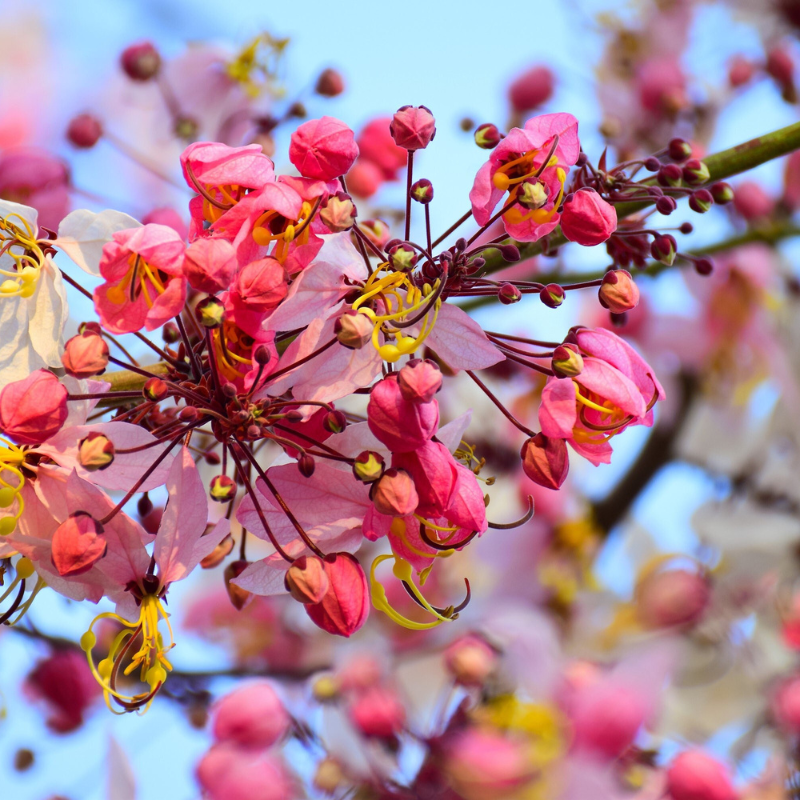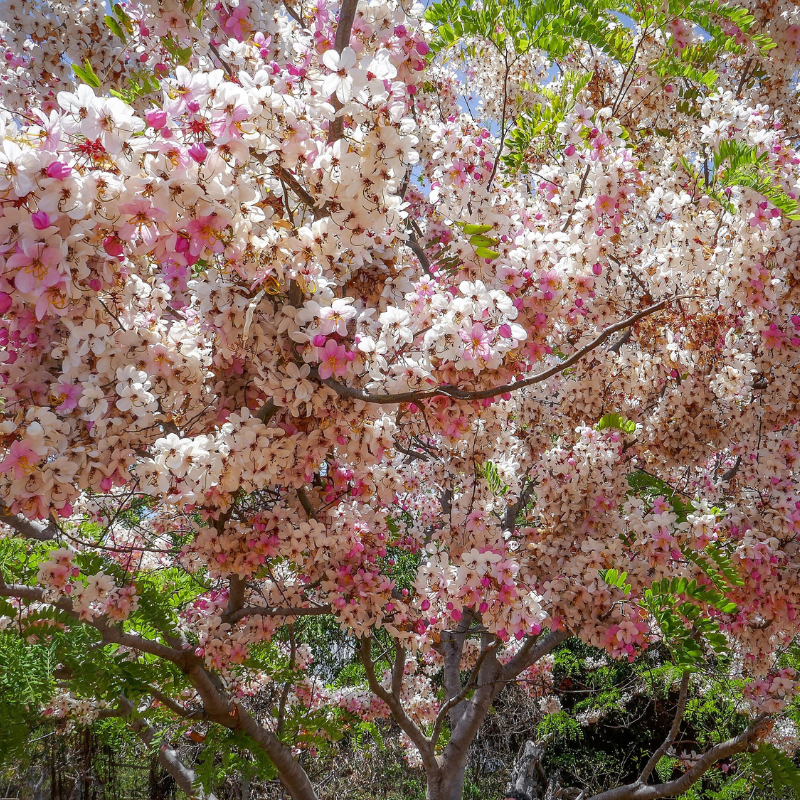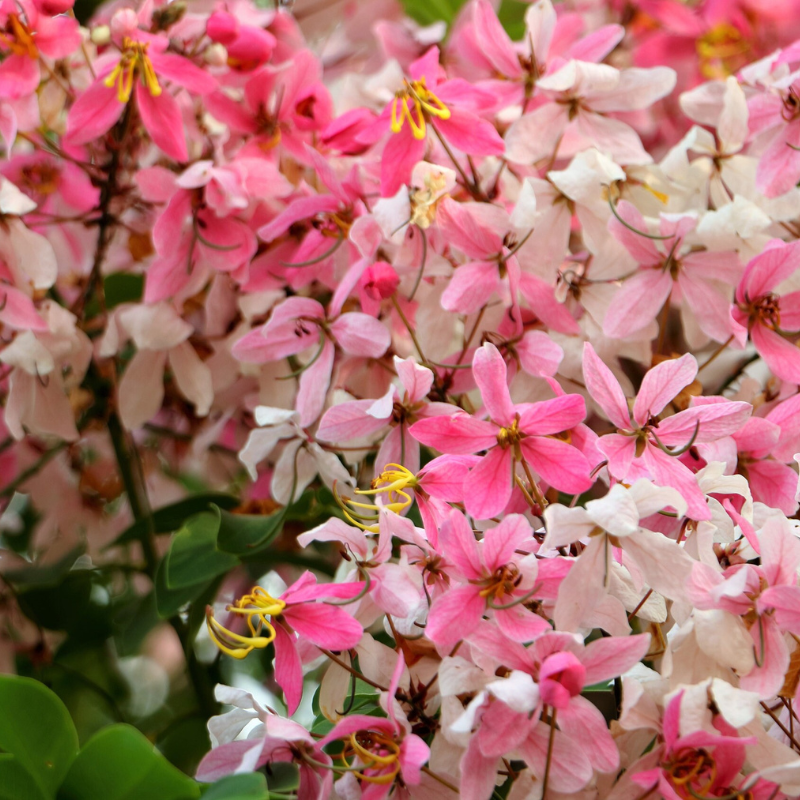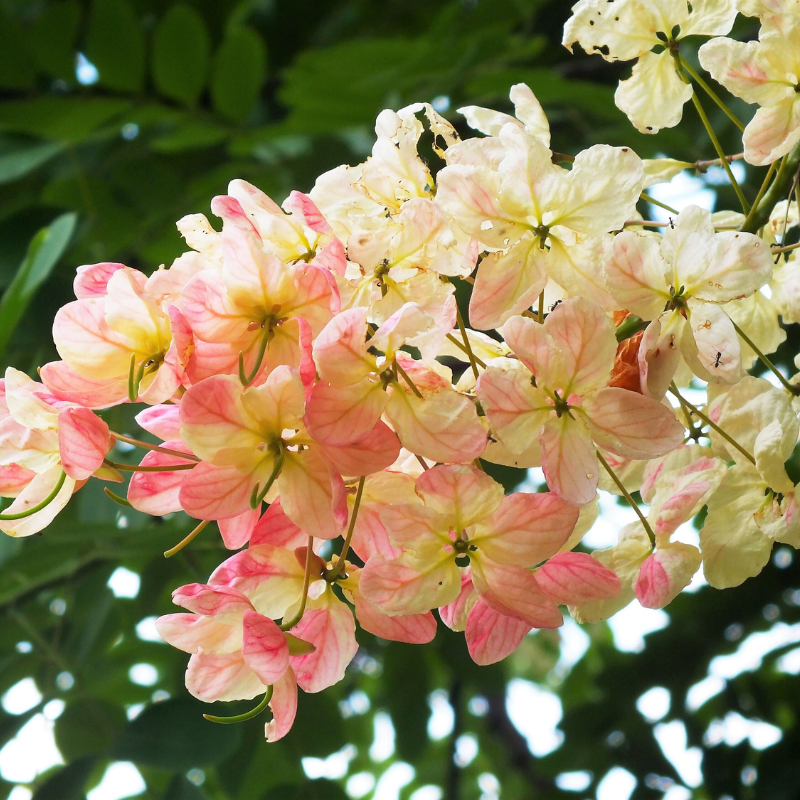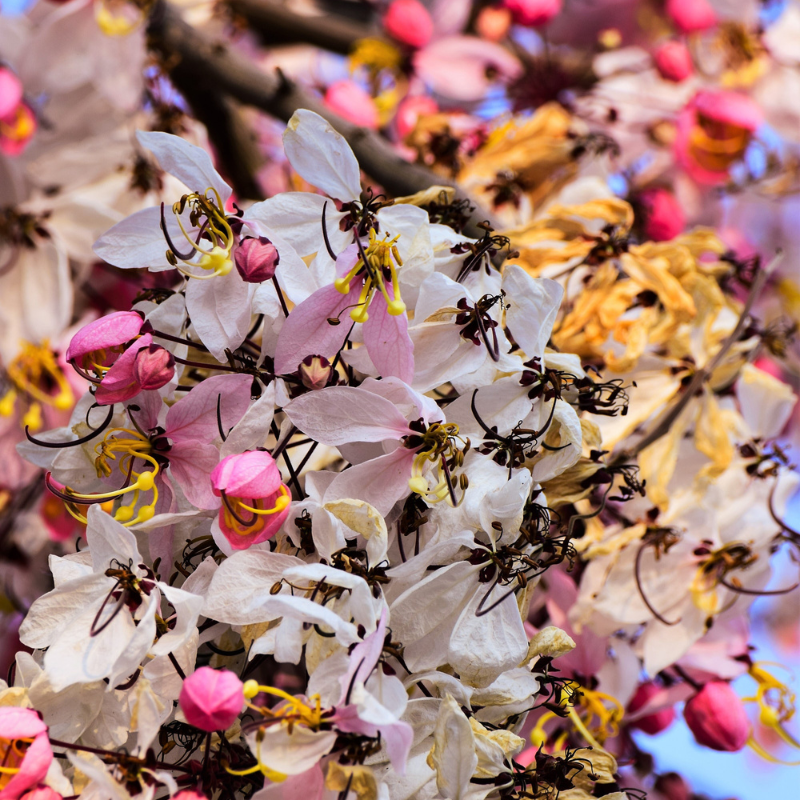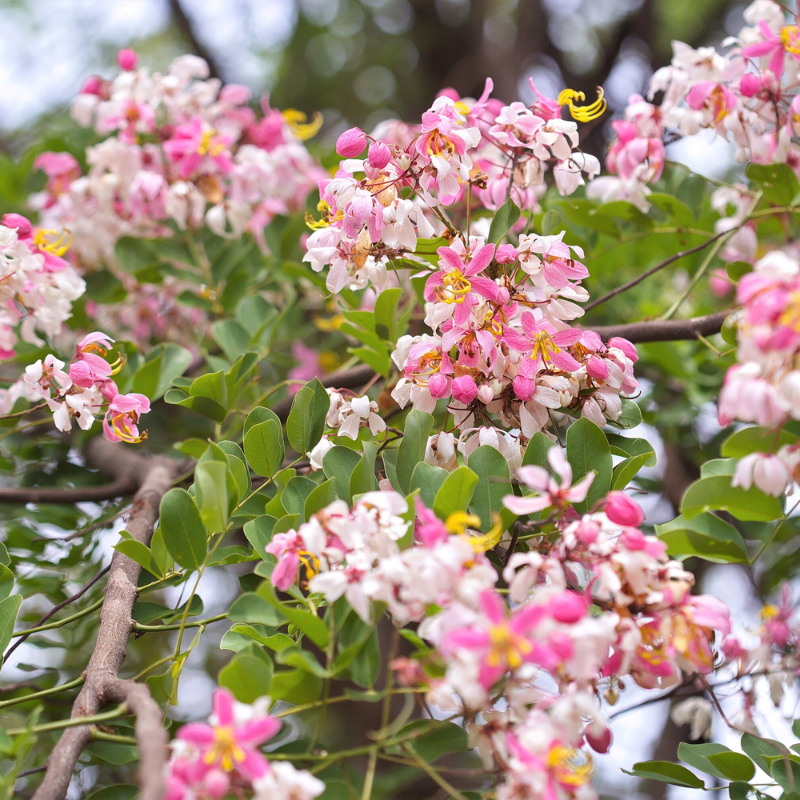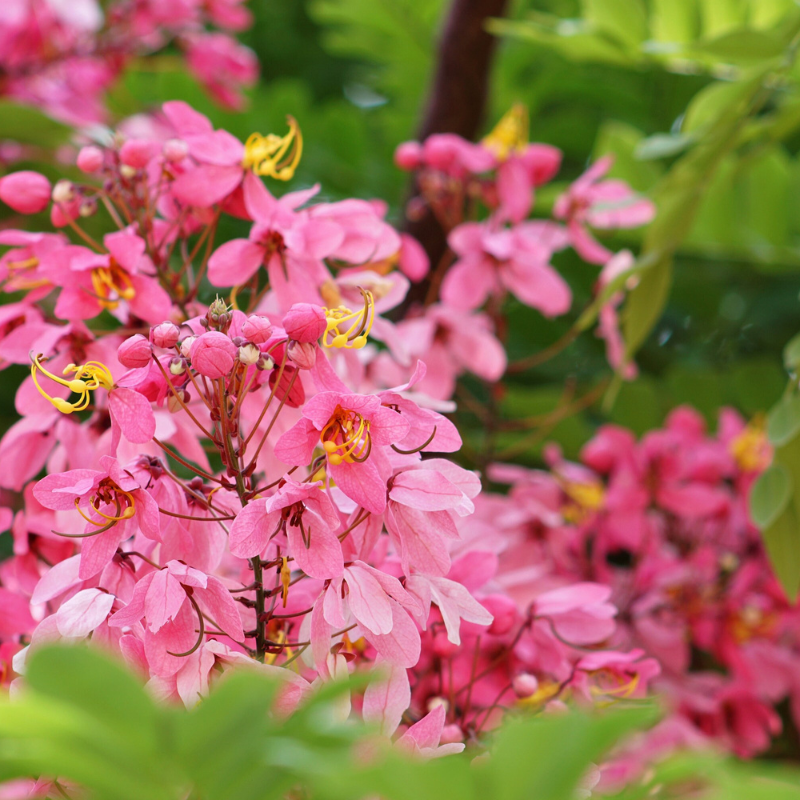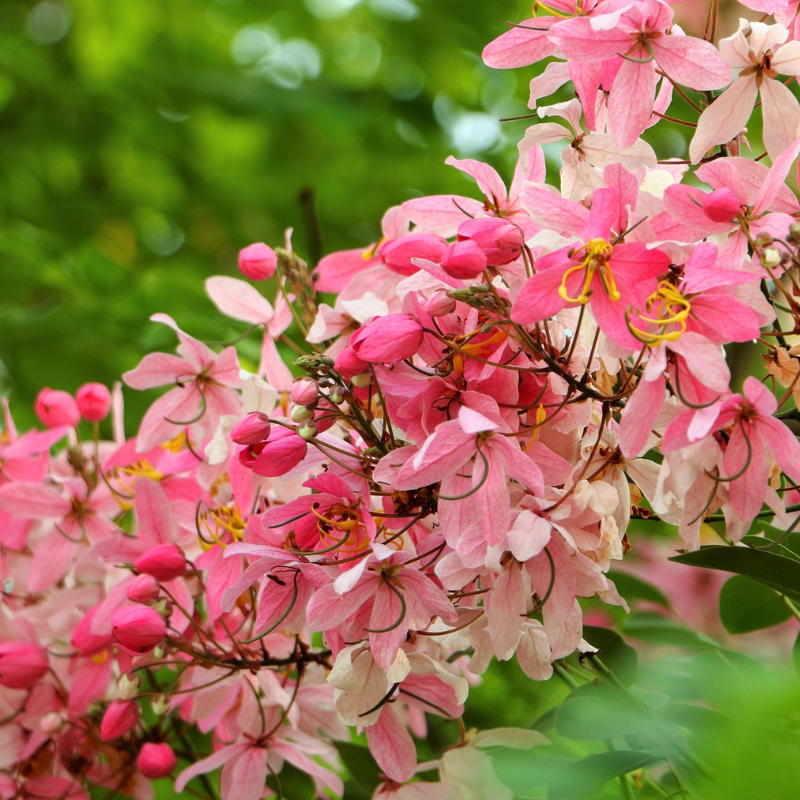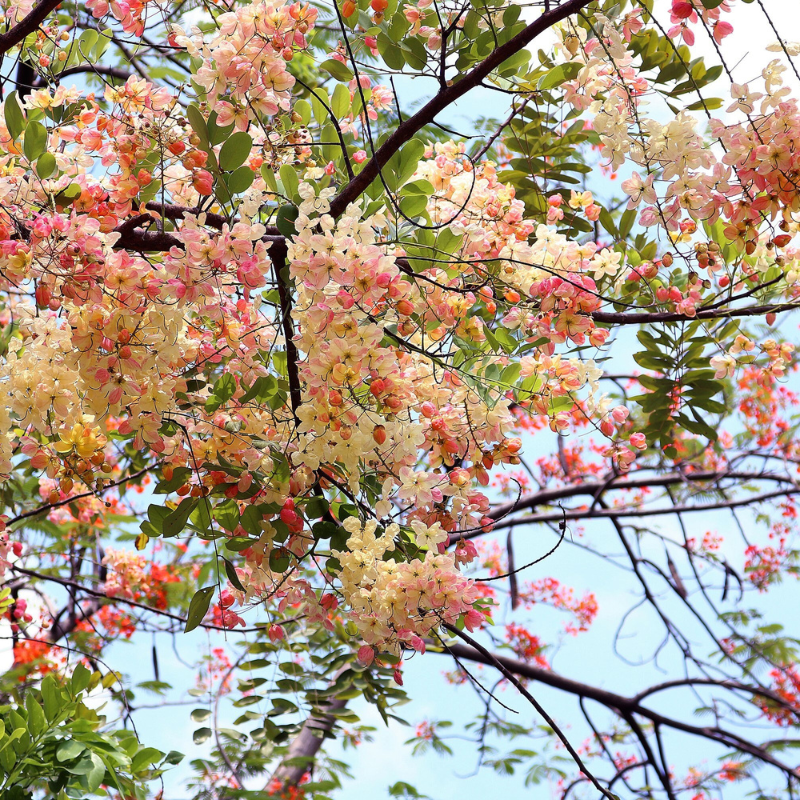- Historical context: The Shower Tree, scientifically known as Cassia fistula, is a flowering plant in the family Fabaceae. It is also known as the Golden Shower Tree due to its beautiful yellow flowers.
- Geographical origination: The Shower Tree is native to the Indian subcontinent and adjacent regions of Southeast Asia.
- Relevant cultural significance: In India, the Shower Tree is the state flower of Kerala and is used in traditional Ayurvedic medicine. It is also a symbol of prosperity and is often planted in gardens and public spaces.
- Time period of discovery: The exact time period of discovery is not well-documented, but it has been known and used in traditional medicine for centuries.
- Original habitat: The Shower Tree thrives in tropical and subtropical regions, often found in forests, along riverbanks, and in open areas.
- Notable historical uses: Historically, the tree has been used for its medicinal properties, particularly in treating skin diseases, digestive issues, and as a laxative.
- Ideal temperature range: The ideal temperature range for growing Shower Trees is between 20°C to 35°C (68°F to 95°F).
- Soil type: The tree prefers well-drained, sandy loam soil but can tolerate a variety of soil types.
- Sunlight requirements: Full sunlight is essential for optimal growth and flowering.
- Watering needs: Moderate watering is required. The tree is drought-tolerant once established but benefits from regular watering during dry periods.
- Planting season: The best time to plant Shower Tree seeds is during the spring or early summer.
- Germination time: Germination typically takes 2 to 3 weeks under optimal conditions.
- Growth cycle duration: The tree can take 5 to 7 years to reach full maturity and start flowering.
- Common pests and diseases: Common pests include caterpillars and aphids. Diseases such as root rot and leaf spot can occur if the tree is overwatered or planted in poorly drained soil.
- Companion planting advice: Companion plants include other tropical and subtropical species that thrive in similar conditions, such as hibiscus and bougainvillea.
- Common challenges and solutions: One common challenge is poor flowering, which can be addressed by ensuring the tree receives full sunlight and is not overwatered. Another challenge is pest infestation, which can be managed with organic insecticides and regular monitoring.
- Nutritional values: The seeds and pods of the Shower Tree are not typically consumed for their nutritional value.
- Health benefits: The tree has various medicinal uses, particularly in traditional Ayurvedic medicine. It is known for its laxative properties and is used to treat constipation, skin diseases, and digestive issues.
- Culinary uses: The seeds and pods are not commonly used in culinary applications.
- Medicinal uses: The pulp of the pods is used as a natural laxative. The bark and leaves are used in traditional medicine to treat skin conditions and digestive problems.
- Other unique advantages: The Shower Tree is highly valued for its ornamental beauty, especially during the flowering season when it produces a stunning display of yellow flowers. It is also used in landscaping and urban beautification projects.
